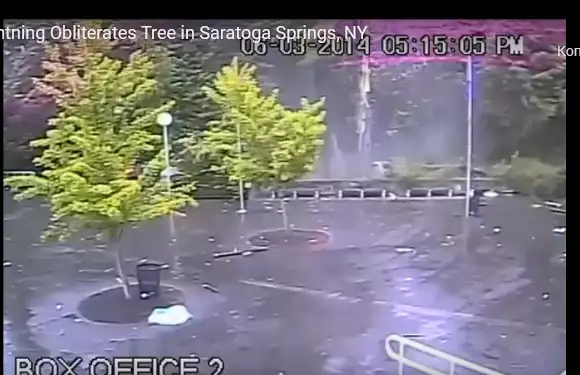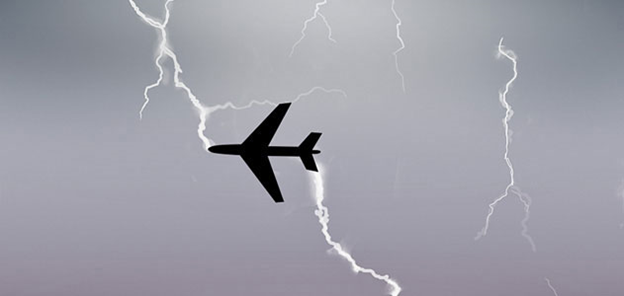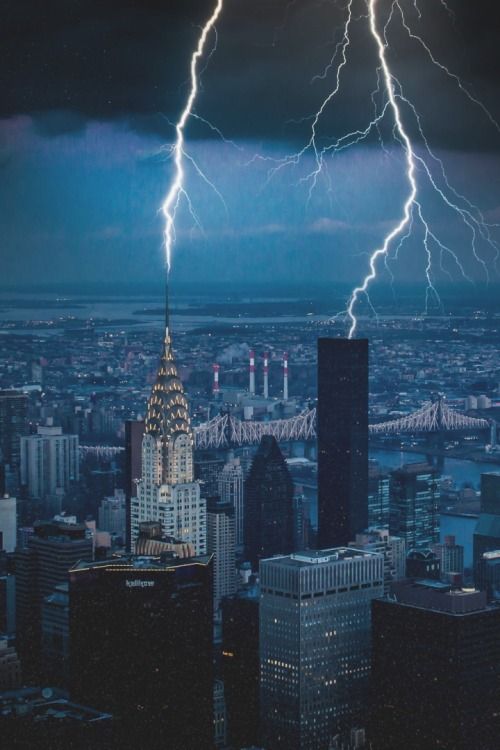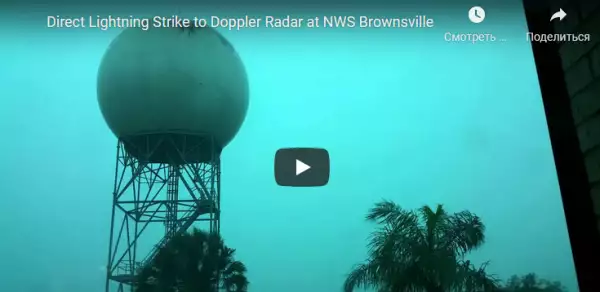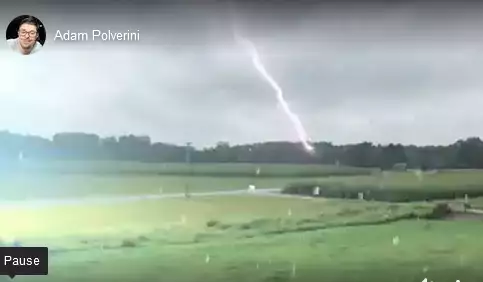Our VK group was contacted by a subscriber. His personal message contained a link to a video file noting that the event had happened quite recently. A short video has captured a lightning strike to a kindergarten. It seems to be an ordinary event but, when we had looked at it in details, we could not believe our eyes. Let us share this amazement with you.
The lightning goes down and strikes a metal vent channel. Note the conditions wherein the lightning strike happened. The building of the kindergarten is low, it's only 3 floors. It is surrounded by high-rise (26, 19, and 18 storeys) residential buildings each of them having its own lightning protection. These high-rise buildings are not only close (42 to 58 meters) but enclose the kindergarten from the three sides! Why did the lightning strike the kindergarten but not a building having at least 5 its heights?

26 эт = 73 м - 26 story = 73 m
18 эт = 51 м - 18 story = 51 m
19 эт = 54 м - 19 story = 54 m
3 эт = 9 м - 3 story = 9 m
To begin, we have performed our own calculations using a special software available at our website. If you don't know, this is a special software based on the advanced statistics lightning protection calculation methods, it has all the required certificates and justifications. The calculation results have confirmed our surprise: the lightning strike probability to the kindergarten is 0.1%. In other words, the video shows a lightning strike that could happen once in 1,000 years! It is unbelievable but this is a fact. At least if you trust what you see in the video.
How could this happen? After the discussion with the ZANDZ Technical Center engineers, we have collected at least 14 options to explain this event. The proposed solutions even included the invasion of aliens...

But we couldn't keep this video in secret in the ZANDZ Technical Center. So, we have sent it to our dear friend and expert, Professor Eduard Meerovich Bazelyan. Our request to explain reasons of this unusual strike has become a basis for a very interesting and short article provided below.

E. M. Bazelyan, DEA, professor;
Power Engineering Institute to the name of G.M. Krzhizhanovsky , Moscow;
recognized Russian expert in the field of grounding and lightning protection.
Abnormal Lightning
Seems like the nature needs overconfident people. They believe they know everything. But they also help to easily give a flick on the nose of another group of know-it-alls so that they would think and try to assess the current level of knowledge with an unbiased eye. The lightning strike to a kindergarten is this kind of disciplinary event. The probability of it is extremely low, but it has happened and we should accept this.
What do we really know today about lightning protection? Not so much, in fact. The engineers have a single protection means, i.e. lightning arrester, which was invented almost 3 centuries ago. It projects over the structure and catches most lightnings. The higher it is, the better it catches the lightnings. We have designed the calculation software. They help us evaluate the protection reliability with sufficient level of confidence. Computer calculation yields a lightning share which is, on average, caught by the lightning arresters, and the share of those which got to the protected facility. In this phrase, "on average" is almost a key explaining word. It has two meanings. First, the calculation predicts average performance of many lightning arresters of a particular type installed in various locations. Second, we are talking about some random lightnings of average strength. Their current is unknown. This is sad because lightnings vary significantly in terms of current. The current varies from several kA to hundreds kA. In fact, a random lightning is useless. We need a prediction for a particular lightning with a particular current hazardous for the protected facility. Here is where the problems begin.

Высота ориентировки - Orientation height
Ток молнии, кА - Lightning current, kA
Today, these problems have at least been discussed but we cannot say, unfortunately, that they have been resolved. Our team also works in a desired direction. And we begin to understand some things. The entire picture is quite interesting. Let's start with the orientation height. It is evident that it is defined by an electric field created by a lightning leader charge. It excites opposed leaders from the lightning arrester and the protected facility. They try to attract a developing lightning. This is the way the orientation process occurs. A strong lightning with a significant charge and, thus, the strong electrical field, has a higher orientation height than the weak ones. This suggests the relationship between the orientation height and the lightning current. The provided figure shows a model function of these parameters according to our theoretical estimates. For an average (here, this word is used again!) in terms of strength lightning with the current about 30 kA, the orientation height at the facility having height h is equal to H0 = 5h. This is the value used in calculations of the protection zones for lightning arresters. It results in a common idea of the lightning attraction radius. Here we can write an equation using a principle of equal distances to the facility with the height h and to the ground surface

(H0 – h)2 +Rat2 = H02
Therefore, the attraction radius is, on average (for a random average lightning, again), Rat = 3h. This is also a commonly accepted value.
But if we take a particular lightning, e.g. with a weak current, then, as you can see from the provided chart, the orientation height will sharply reduce to about √2h. The number of lightnings caught by the lightning arresters is proportional to Rat2 meaning that very weak lightnings will be caught by the lightning arrester almost five times less than the average ones, i.e. with the current about 30 kA. Surely, this is a very rough estimate. It cannot be called final and used in the calculation software, but it makes us think of this.
Now, let's talk about this particular lightning that got into the kindergarten. Seems like it is really weak, with its current being about several kA. Can we say anything else about it? I think, we can. By introducing a concept of attraction radius, the specialist suggests that most lightnings are attracted to an above-ground structure somewhere from the sides. And this is correct. But we can also imagine a lightning that has developed directly above the facility and moves exactly downward to it. Such lightning does not need orientation. In other words, it does not need control from opposed leaders, it just goes along a vertical line in its own electrical field. And the lightning is very weak, its charge is low and it does not excite any opposed leaders of any significant length even from adjacent high-rise buildings. There is almost no orientation process. That's it. By proceeding to move along the vertical line, the channel of this weak lightning just goes directly to the roof of the kindergarten.
I have no special arguments for this but this imaginary picture is physically probable. But the point is that it makes us think about new calculation methods, which should allow us to reject the analysis of random "average" lightnings and convert to the lightning arrester performance evaluation for particular lightnings carrying currents hazardous for particular structures.
P.S. We thank our subscriber Anton Dopler and patient author of the video Nelli Dopler!
Let's discuss this interesting event and its reasons in our VK group or in the Telegram channel!
Related Articles:
